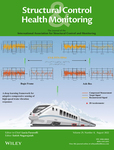Performance assessment of self-anchored suspension footbridge using 3D laser scanning
Funding information: Science and Technology Development Program of Tianjin Transportation Commission, Grant/Award Number: 2019-06
Summary
Self-anchored suspension footbridges are widely used in metropolitan area because of their unique shape. Their performance assessment, which is typically performed manually, is labor intensive and prone to error. Developments in three-dimensional (3D) laser scanning enable the precision and efficiency of quality inspection operations to be improved. This paper presents a new approach for assessing the structural performance of a self-anchored suspension footbridge in Tianjin using 3D laser scanning. Based on point-cloud processing and reverse modeling, the deformation of elements can be determined by comparing the difference between two reverse models with a 2-year interval. The proposed approach establishes a holistic assessment framework using the deformation of elements. Results show that 3D laser scanning is suitable for the performance assessment of self-anchored suspension footbridges, thereby validating the applicability of the proposed approach.
Open Research
DATA AVAILABILITY STATEMENT
The data that support the findings of this study are available on request from the corresponding author. The data are not publicly available due to privacy or ethical restrictions.




